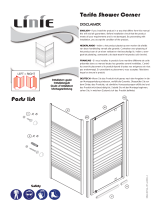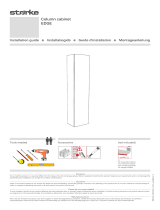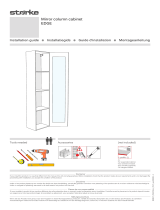
31
b) Assembly
• During vehicle assembly, there is a risk of injury due to sharp edges, pointed parts and improper handling
of tools.
• Improper assembly may result in damage to vehicle parts and poor performance. So be very careful
when assembling.
• Toassemblethevehicle,useonlyasufcientlylarge,at,andstablesurface.Protectthesurfaceofa
work table from scratches by using a suitably thick underlay.
• Do not use force when assembling parts. Do not overtighten the screws! However, make sure that
screws, nuts, etc. are tightened correctly.
• Forassembly,usesuitabletoolsinexcellentcondition.
• Take your time!
• If you have never assembled such a vehicle before, seek guidance from a model maker who has the re-
quired knowledge. A few helpful tips and assistance from a professional can easily solve many problems,
especially at the beginning of a “model making career”.
c) Operation
• Before each use, make sure that no other models are operating on the same frequency within the range
of the remote control when operating the model with a 27 or 40 MHz remote control unit. Control of the
remote controlled vehiclewill be lost! Always use different frequencies for each model.
• With every operation, the settings of the trim regulator for forward/reverse drive as well as those for
steeringmustbechecked,andifnecessary,modied.
• For this reason, the wheels of the vehicle must not be put on the ground during setup (switching on the
remote control and the vehicle). Place the vehicle on a suitable surface so that the wheels can turn freely
(do not touch the drive!).
• Then adjust the trim accordingly so that when the lever for the forward/reverse drive (neutral position)
is fully released, the motor stops rotating or the steering is straight (straight drive can accurately be
adjusted later while operating the vehicle).
• Duringsetup,alwaysswitchontheremotecontrol(transmitter)rst.Onlythencantherechargeable
battery pack of the vehicle be connected with the cruise control/receiver and the model be switched on.
Otherwisetheremaybeunexpectedresponsesbythecruisecontrol/receiverandthereforetheelectric
model!
• Improper use can cause serious injury and damage to property! Only use the vehicle when it is within
your sight. Do not use the vehicle at night.
• Only use the vehicle when you are fully alert and able to respond. As is the case when driving a real
vehicle, fatigue, alcohol or medications can affect your ability to respond.
• Please note that this model car should not be driven on public roads or streets. Only operate it on private
sitesorplaceswhicharespecicallydesignatedforremote-controlledmodels.
• Do not drive the vehicle towards people or animals.


































